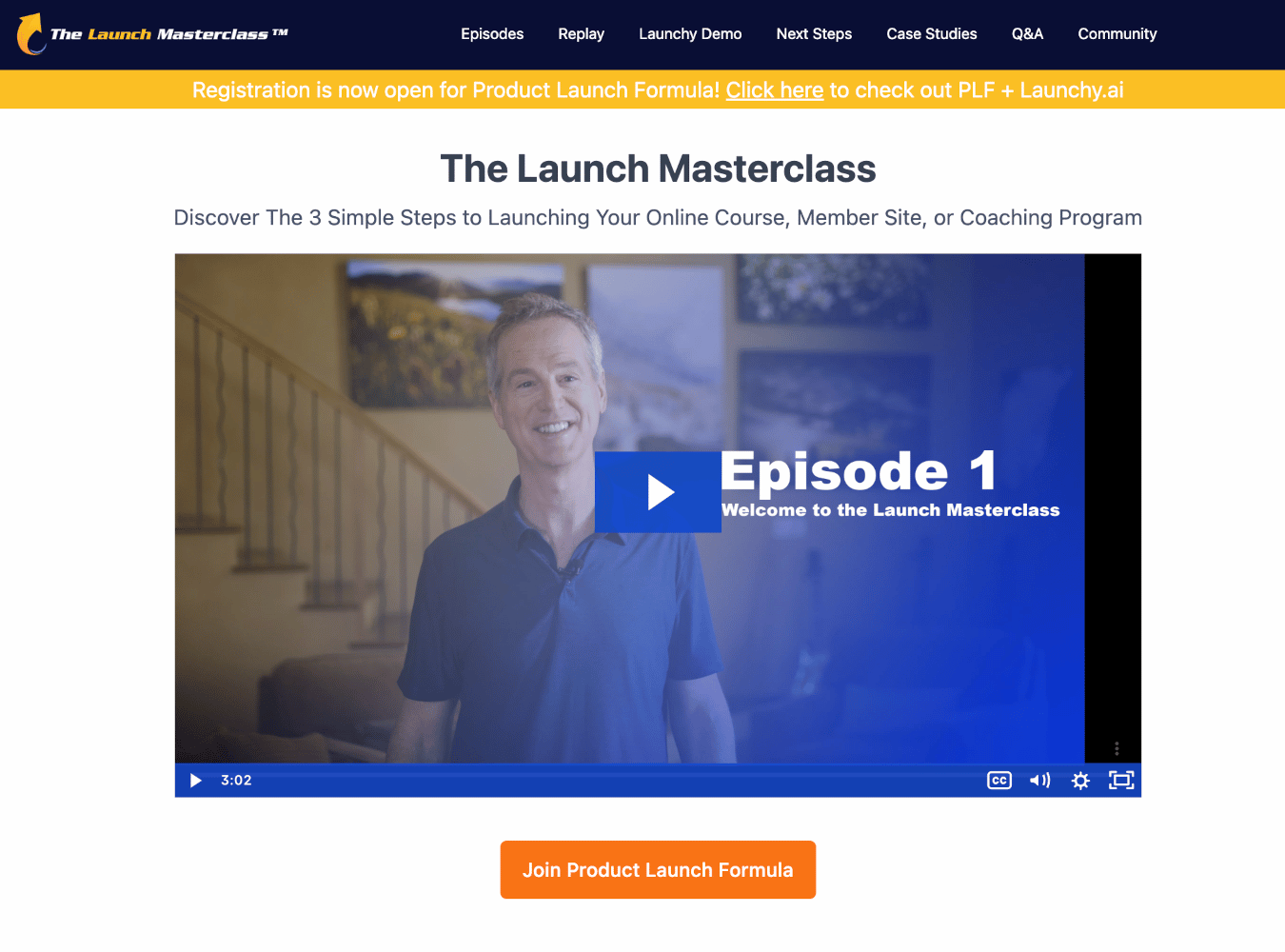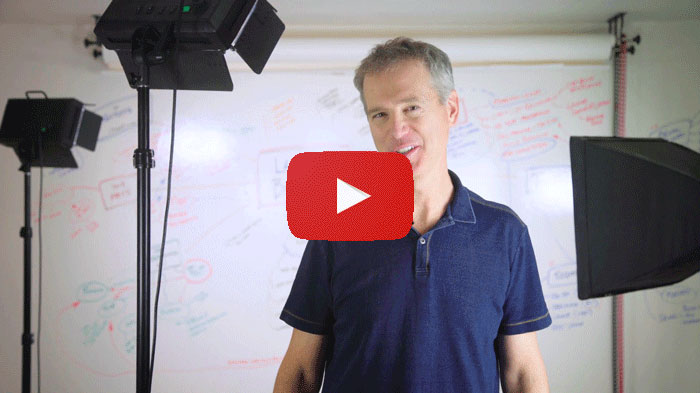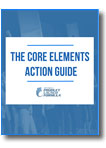Jeff Walker just started his once-a-year free “Launch Workshop”…
It’s a game-changer for your business (whether you’ve started it or not), and the best part: it’s completely free.
He’s been doing this every year since 2005, and he’s had almost a million people go through the workshop – and the success stories are legendary.
Watch the Product Launch Formula Workshop
This first lesson covers the one launch strategy that’s generated more than $500 million in results. You’ll learn what’s working NOW if you want to launch a new product, service… or even an entire business.
Best regards,
-Jerry
P.S. Jeff wrote the playbook for the online product launch… so when the rules change, I always pay attention to what he’s doing.
Summary of the Key Concepts from the Product Launch Workshop
I’ve summarized key concepts from the product launch workshop below on this page, and explained the significance of use when launching your product. Learn about the Sideways Sales Letter, the sequences, storytelling, Problem Solution Path, and targeting mental triggers:
The Sideways Sales Letter: What Is It & Why You Should Use It
The Sideways Sales Letter is a marketing approach developed by Jeff Walker that divides the traditional direct-response sales letter and delivers the content over several days – in sequences. The strategy involves storytelling and mental triggers to gain trust before the product launch.
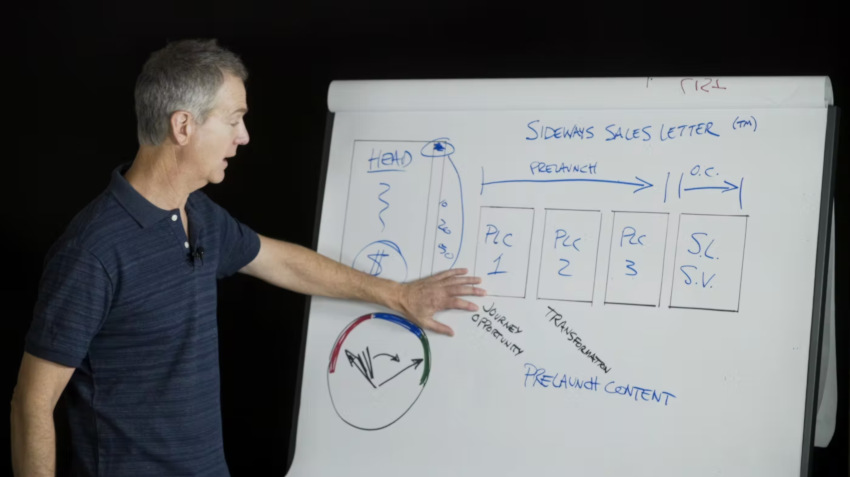
Walker’s strategy addresses a key issue with traditional direct marketing: people tend to jump to the price before considering the product’s story. By presenting the sales content over time, potential customers engage with the narrative before seeing the offer.
The Sideways Sales Letter is further divided into the Pre-Launch and Open Cart sequences. The Pre-launch sequence usually spans 7-10 days and is split into three or more content pieces, which will tell the story of your upcoming offer. The Open Cart sequence starts when you offer your product or service for purchase.
Sequences: What Are And Why Should You Use Them When Launching?
In the context of product launches, sequences are a series of planned, interlinked content pieces designed to attract and maintain audience interest over a certain period. They serve as an effective tool for delivering information, creating suspense, and building customer relationships. Here’s why they matter:
- Attention-Grabbing: With the increasing noise in today’s digital marketplace, standing out from the crowd can be tough. Sequences help you break through that noise and grab your audience’s attention. They create anticipation and a sense of ongoing narrative that keeps your audience engaged and coming back for more.
- Information Delivery: Sequences allow for more digestible and effective information delivery. Instead of bombarding your audience with a bulk of information all at once, sequences break it down into manageable chunks. This approach makes it easier for your audience to absorb and understand the value of your product.
- Building Relationships: Sequences provide repeated touchpoints with your audience. Over time, this helps build relationships and trust. When the audience trusts you, they’re more likely to consider your product when it finally launches.
- Maintaining Interest: The periodic release of content in sequences maintains your audience’s interest over a longer span. It keeps your product on their mind and builds anticipation for the launch.
- Effective Storytelling: Sequences enable a storytelling approach to marketing, which is an effective way to connect with your audience on a deeper level.
- Leveraging Psychology: Sequences allow you to use psychological triggers such as curiosity (through cliffhangers) and urgency (by revealing the product launch date). These can motivate your audience to take action.
To sum up, using sequences, you can build trust and relationships with potential customers before asking for a sale.
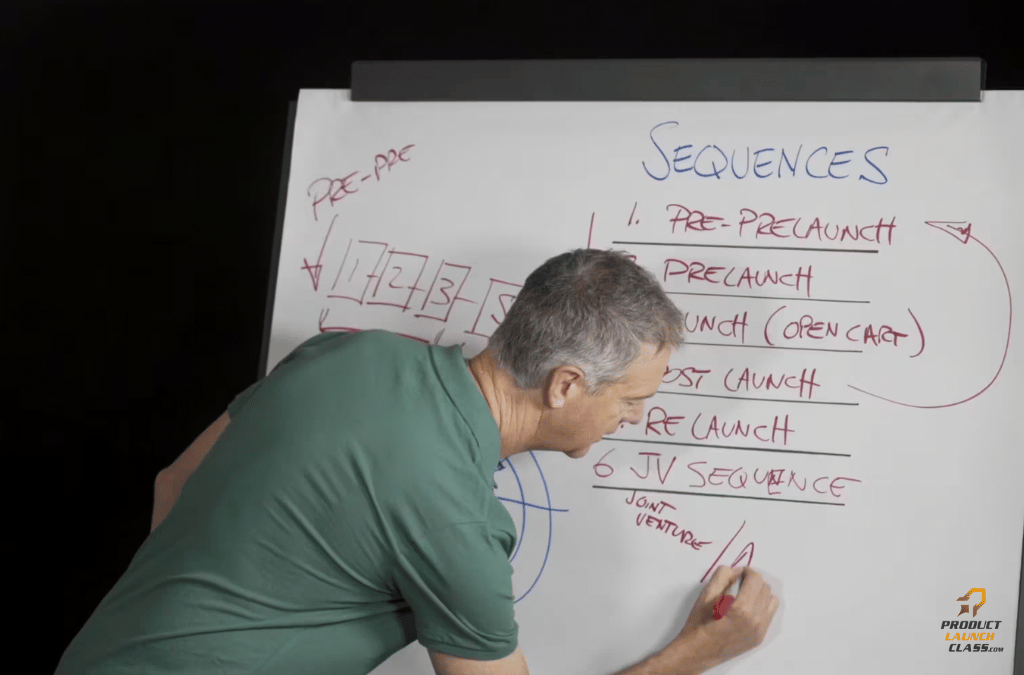
Which sequences does the PLF course cover and what is their role?
Sequences build the PLF and the Sideways Sales Letter. While the Pre-launch and Open Cart sequences may be most familiar, there are others within the formula, each serving a unique role:
- Pre-Pre-Launch: Warms up the audience.
- Pre-Launch: Builds relationships and prepares people for the upcoming offer.
- Open Cart: Sells the product or service.
- Post Launch: Nurtures new customers and those who didn’t buy, preparing them for the next launch.
- JV Launch: Excites affiliates for the upcoming promotion if doing a Joint Venture launch.
Use Storytelling To Sell Efficiently: Why, How and What To Express
Storytelling is a marketing tactic for expressing a brand’s message through engaging stories.
Like the old direct-response approach, you should use storytelling to sell efficiently. This way, the audience gets the point and actively imagines what you, as a storyteller, describe. At the same time, you wake up their emotions so they become engaged and thus remember the story messages.

A key distinction in Jeff Walker’s PLF is that marketing stories are delivered in sequences. This approach ensures your message resonates with the audience over time, preparing them for the next phase. Jeff suggests using a “cliffhanger effect” at the end of a content piece, compelling the audience to follow the story in the next content piece.
Below is a quick overview of what each content piece should express to make a sale in the final phase – Open Cart:
- Prelaunch Content Piece (PLC) #1: Theme – The Opportunity. Show potential clients how their lives could transform.
- PLC #2: Theme – The Transformation. Demonstrate how this transformation could manifest in their lives, usually through case studies.
- PLC #3: Theme – The Ownership Experience. Ensure potential clients feel a sense of ownership over the proposed change.
- Open Cart Sequence: Theme – The Enrollment. The focus here is on getting potential clients to commit to that change.
Use Problem Solution Path (P.S. Path) In The Pre-launch Content
The Problem Solution Path (P.S. Path) is a strategy for structuring your pre-launch content to guide your audience towards a purchase naturally. It can skyrocket the success of your product launch.
Instead of the traditional Problem-Agitate-Solve (P.A.S.) approach used in old-school sales letters, the P.S. Path takes a more friendly route. It’s a less pushy method that still effectively leads to sales. Here’s how it works:
- You start with your first pre-launch content, typically a video, where you identify a problem that your audience is facing and immediately provide a solution. By doing so, you’re offering significant value to your viewers and stirring up specific mental triggers.At the end of this first content piece, you hint at another problem but wait to solve it. This “cliffhanger” technique fuels anticipation, compelling viewers to return for the following content piece to find the solution.
- The second content piece then revisits the unsolved problem from the first video, and you provide the solution. Yet, this solution subtly introduces another problem.
- This pattern repeats throughout your pre-launch sequence until the final “Open Cart” video, where you present your product as the ultimate solution to all the problems you’ve discussed. By this point, if you’ve provided much value and established authority, you should see a wave of sales coming your way.
To summarize, P.S. Path goes like this: problem > solution > problem.
Target Mental Triggers
“Mental triggers” refer to the psychological impacts that affect our decision-making process. In PLF, Jeff Walker frequently targets these triggers to optimize audience response.
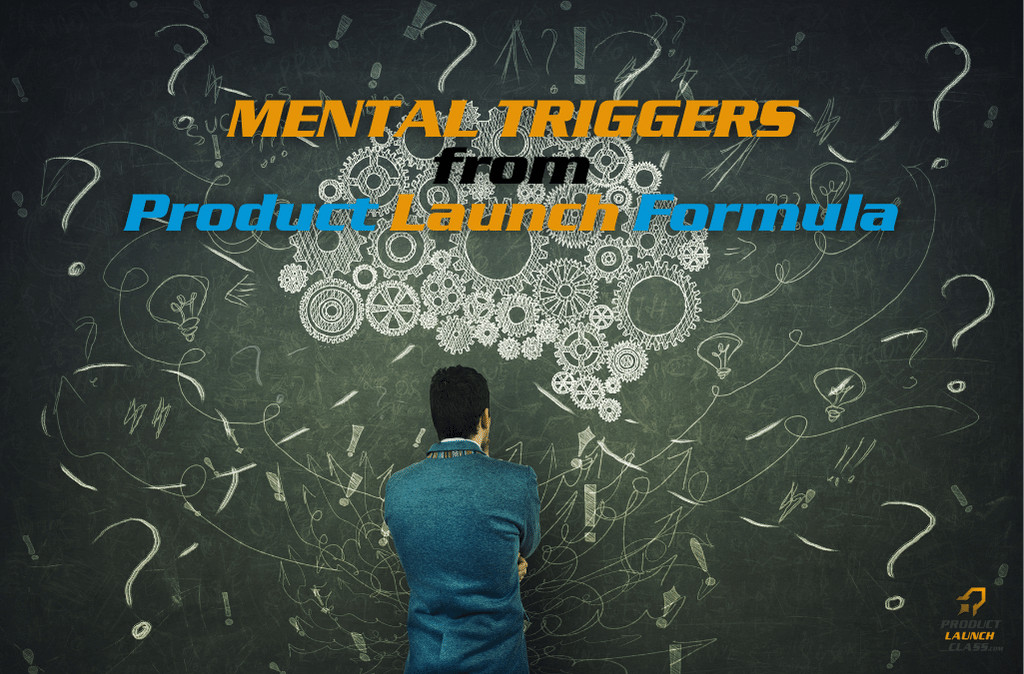
Below are the mental triggers Jeff focuses on, along with their effects and the stages of the launch sequence they’re best applied in:
- Stories: Telling compelling stories grabs people’s attention and makes users more likely to be influenced by the marketing message embedded within. This strategy should be used throughout all stages of the launch sequence.
- Authority: By sharing valuable knowledge and creating positive changes in people’s lives before asking for a sale, you establish yourself as an authoritative figure. Being perceived as an authority makes your audience more likely to pay attention to you. This technique is most effective during the pre-launch stage.
- Anticipation: Creating anticipation by hinting at exciting future content or leaving narratives unfinished draws people in. This method attracts attention and promotes eagerness for upcoming content or events. You should trigger anticipation during the pre-pre-launch, pre-launch, and open cart stages.
- Reciprocity: Offering real value to your audience develops a sense of obligation to give back to you. You should build reciprocity during the pre-launch stage.
- Social proof: Including case studies or testimonials from successful individuals in your content encourages others to follow suit. Seeing others succeed or endorse a product or service makes it more appealing. This strategy works well during the pre-prelaunch, pre-launch, and open cart stages.
- Community: Encouraging audience interaction and comments fosters a community around the product. The human need for social connection makes people feel secure and motivated. This approach is effective during the pre-launch stage.
- Scarcity: Limiting product availability or making an offer time-sensitive increases its desirability due to the principle of scarcity. The idea of limited availability makes a product more appealing. Scarcity is most effective during the open cart stage.
Video Summary of the Launch Masterclass and PLF
Watch the video below for a concise, illustrated explanation of PLF and the concepts from the workshop:

